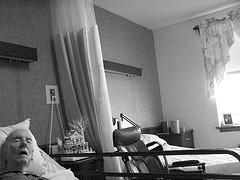 As the Baby Boomers grow older, it is becoming more and more important to have options in senior care. The needs of California’s seniors vary greatly, from those who may just need a little extra help around the home to those who are ill and need round-the-clock care. Assisted living facilities are a terrific option for those who are unable to live independently but do not need the services of a nursing home. Sadly, the problems commonly referred to as “nursing home abuse” can also affect residents of these intermediate care facilities. In addition to representing the victims of abuse in assisted care facilities, our San Francisco elder care attorney supports measures aimed at preventing abuse from occurring in the first place, a view consistent with our overarching philosophy that prevention should always come first.
As the Baby Boomers grow older, it is becoming more and more important to have options in senior care. The needs of California’s seniors vary greatly, from those who may just need a little extra help around the home to those who are ill and need round-the-clock care. Assisted living facilities are a terrific option for those who are unable to live independently but do not need the services of a nursing home. Sadly, the problems commonly referred to as “nursing home abuse” can also affect residents of these intermediate care facilities. In addition to representing the victims of abuse in assisted care facilities, our San Francisco elder care attorney supports measures aimed at preventing abuse from occurring in the first place, a view consistent with our overarching philosophy that prevention should always come first.
California Legislators Eye Reforms to Assisted Living Facility Regulations
According to the San Francisco Chronicle, a group of California lawmakers is working to enact changes to the rules for licensing assisted care facilities in the state, including providing improved public access to complaint files and increased training requirements. State Senator Mark Leno and Assemblywoman Nancy Skinner are among those who have introduced bills addressing senior residential care concerns. Overall, more than a dozen bills are part of the reform package spurred in part by the events at Valley Springs Manor in Castro Valley where the facility “closed” with more than a dozen residents left behind. Although costs have not yet been determined, Leno believes the money will be found.
 San Francisco Injury Lawyer Blog
San Francisco Injury Lawyer Blog




 Reporters with
Reporters with  Scam Targets Older Homeowners in Newark, CA
Scam Targets Older Homeowners in Newark, CA Just a few weeks ago, as detailed in the
Just a few weeks ago, as detailed in the